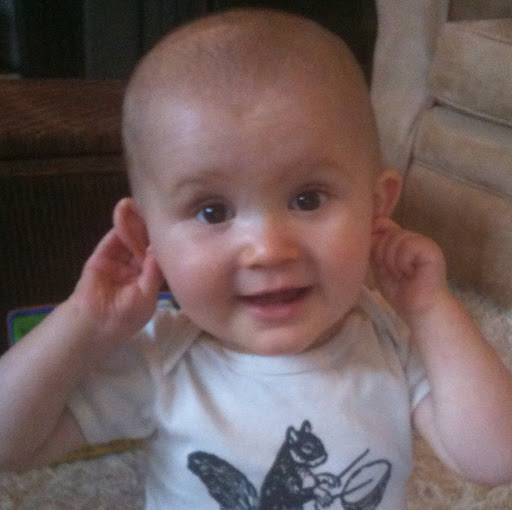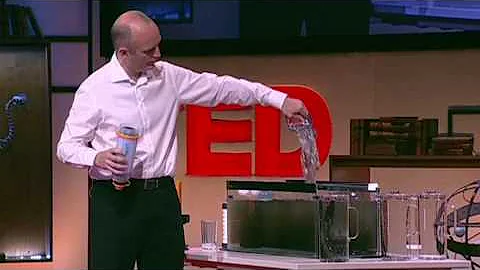Michael T Prichard
age ~41
from Grand Rapids, MI
- Also known as:
-
- Thomas M Prichard
Michael Prichard Phones & Addresses
- Grand Rapids, MI
- Williamston, MI
- 1030 NW 12Th Ave APT 110, Portland, OR 97209
- Hale, MI
- 17172 Bolsa Chica St APT 65, Huntingtn Bch, CA 92649
- Huntington Beach, CA
- Haslett, MI
- Addison, TX
- 2397 Palm Dale Dr Sw, Grand Rapids, MI 49519 • 6163043024
Work
-
Position:Food Preparation and Serving Related Occupations
Emails
Resumes

Michael Prichard
view source
Michael Prichard
view source
Michael Prichard
view source
Michael Prichard
view source
Michael Prichard
view source
Michael Prichard
view sourceLocation:
United States
Us Patents
-
Golf Club Head
view source -
US Patent:D688763, Aug 27, 2013
-
Filed:Jul 31, 2012
-
Appl. No.:29/428484
-
Inventors:Jeff D. Brunski - Los Angeles CA, US
Darius Cyrulik - Huntington Beach CA, US
Matthew R. Daraskavich - Huntington Beach CA, US
James R. Harris - Burnaby, CA
Michael T. Prichard - Huntington Beach CA, US
Ryan J. A. Ritchie - Huntington Beach CA, US
Nick Trahan - Huntington Beach CA, US -
Assignee:Dunlop Sports Co., Ltd. - Kobe-shi
-
International Classification:2102
-
US Classification:D21759
-
Golf Club Head
view source -
US Patent:D694843, Dec 3, 2013
-
Filed:Aug 7, 2012
-
Appl. No.:29/429092
-
Inventors:Jeffrey D. Brunski - Los Angeles CA, US
Darius Cyrulik - Huntington Beach CA, US
Matthew R. Daraskavich - Huntington Beach CA, US
James R. Harris - Burnaby, CA
Michael T. Prichard - Huntington Beach CA, US
Ryan J. A. Ritchie - Huntington Beach CA, US
Nick Trahan - Huntington Beach CA, US -
Assignee:Dunlop Sports Co. Ltd. - Kobe-shi
-
International Classification:2102
-
US Classification:D21759
-
Golf Club Head
view source -
US Patent:20140045609, Feb 13, 2014
-
Filed:Aug 7, 2012
-
Appl. No.:13/568741
-
Inventors:Jeff D. BRUNSKI - Los Angeles CA, US
Darius CYRULIK - Huntington Beach CA, US
Matthew R. DARASKAVICH - Huntington Beach CA, US
Michael T. PRICHARD - Huntington Beach CA, US
Ryan J. A. RITCHIE - Huntington Beach CA, US
Michael J. COHEN - Evanston IL, US -
Assignee:DUNLOP SPORTS CO., LTD. - Kobe-shi
-
International Classification:A63B 53/04
B23P 17/00 -
US Classification:473345, 473324, 2940701
-
Abstract:A golf club head comprises a loft angle no less than 18, a striking face, a sole portion, and a top portion having an exterior surface. In an imaginary vertical plane spaced from a face center by no more than 10 mm and perpendicular to an imaginary striking face plane, an imaginary line segment has a length of 25 mm, a first endpoint located in the imaginary striking face plane, a second endpoint located above the exterior surface, and forms an angle θ with the striking face plane between 55 and 65. The line segment is tangent to the exterior surface at a first point. A second point is located on the imaginary line segment and spaced from the first point by no less than 1 mm. The second point is spaced from the exterior surface by a gap distance that is no greater than 0.15 mm.
-
Golf Club Head Or Other Ball Striking Device Having Impact-Influencing Body Features
view source -
US Patent:20230016585, Jan 19, 2023
-
Filed:Sep 13, 2022
-
Appl. No.:17/944099
-
Inventors:- Phoenix AZ, US
Kevin Harper - Fort Worth TX, US
Eric A. Larson - Arlington TX, US
Michael T. Prichard - Portland OR, US
Hiromitsu Akiyama - Tokyo, JP
Yoshimasa Fujita - Ping-Tung Hsien, TW -
International Classification:A63B 53/04
A63B 60/00 -
Abstract:A ball striking device, such as a golf club head, has a face with a striking surface configured for striking a ball and a channel extending across a portion of the sole. The channel may be recessed from adjacent surfaces of the sole and have a depth of recession from the adjacent surfaces of the sole. The channel may have a cross-sectional profile that is asymmetric with a front wall and a rear wall where the front wall is longer than the rear wall. The channel may also have a center thickness that is different than a thickness at the heel and toe sides.
-
Golf Club Head Or Other Ball Striking Device Having Impact-Influencing Body Features
view source -
US Patent:20210283470, Sep 16, 2021
-
Filed:Oct 13, 2020
-
Appl. No.:17/069763
-
Inventors:- Phoenix AZ, US
Kevin Harper - Fort Worth TX, US
Eric A. Larson - Arlington TX, US
Michael T. Prichard - Portland OR, US
Hiromitsu Akiyama - Tokyo, JP
Yoshimasa Fujita - Ping-Tung Hsien, TW -
International Classification:A63B 53/04
-
Abstract:A ball striking device, such as a golf club head, has a face with a striking surface configured for striking a ball and a channel extending across a portion of the sole. The channel may be recessed from adjacent surfaces of the sole and have a depth of recession from the adjacent surfaces of the sole. A pair of ribs are positioned within the channel. The ribs may diverge away from one another and may have a first rib located in a toe portion of the channel and a second rib located in the heel portion of the channel.
-
Golf Club Head Or Other Ball Striking Device Having Impact-Influencing Body Features
view source -
US Patent:20210128990, May 6, 2021
-
Filed:Jan 7, 2021
-
Appl. No.:17/144019
-
Inventors:- Phoenix AZ, US
Eric A. Larson - Ft. Worth TX, US
Andrew G.v. Oldknow - Beaverton OR, US
Michael T. Prichard - Portland OR, US
Nathaniel J. Radcliffe - Trophy Club TX, US
Robert M. Boyd - Flower Mound TX, US -
International Classification:A63B 53/04
A63B 60/52 -
Abstract:A golf club head having a metal portion adhered to a non-metal portion to define a closed internal volume therebetween, and an elongated channel extending across a portion of the sole. The channel may be recessed from adjacent surfaces of the sole, wherein the channel comprises a center portion extending across a center of the sole, a heel portion extending from a heel end of the center portion toward the heel, and a toe portion extending from a toe end of the center portion toward the toe, wherein the width of the center portion of the channel is substantially constant, and wherein the width of the channel increases from the heel end of the center portion to the heel and from the toe end of the center portion to the toe.
-
Golf Club Head Or Other Ball Strikiing Device Having Impact-Influencing Body Features
view source -
US Patent:20200368589, Nov 26, 2020
-
Filed:Aug 11, 2020
-
Appl. No.:16/990787
-
Inventors:- Phoenix AZ, US
Kevin Harper - Fort Worth TX, US
Eric A. Larson - Arlington TX, US
Michael T. Prichard - Portland OR, US
Hiromitsu Akiyama - Tokyo, JP
Yoshimasa Fujita - Ping-Tung Hsien, TW -
International Classification:A63B 53/04
-
Abstract:A ball striking device, such as a golf club head, has a face with a striking surface configured for striking a ball and a channel extending across a portion of the sole. The channel may be recessed from adjacent surfaces of the sole and have a depth of recession from the adjacent surfaces of the sole. The channel may have a cross-sectional profile that is asymmetric with a front wall and a rear wall where the front wall is longer than the rear wall. The channel may also have a center thickness that is different than a thickness at the heel and toe sides.
-
Golf Club Head Or Other Ball Striking Device Having Impact-Influencing Body Features
view source -
US Patent:20200269098, Aug 27, 2020
-
Filed:May 8, 2020
-
Appl. No.:16/870729
-
Inventors:- Phoenix AZ, US
Kevin Harper - Fort Worth TX, US
Eric A. Larson - Arlington TX, US
Michael T. Prichard - Portland OR, US
Hiromitsu Akiyama - Tokyo, JP
Yoshimasa Fujita - Ping-Tung Hsien, TW -
International Classification:A63B 53/04
-
Abstract:A ball striking device, such as a golf club head, has a face with a striking surface configured for striking a ball where the face has multiple thickness regions. The face has a center region, an upper region, a lower region, a toe region, and a heel region. The upper and lower regions have a ramped thickness extending from a center region to an upper and lower edge of the face. The heel and toe regions have a constant face thickness and have a thickness less than the other regions. Additionally, the club head body has a flange where the face is welded to the club head body. The flange has a thickness that is greater than the thickness of the heel and toe regions of the face.

Michael Prichard Germany
view source
Michael Prichard
view source
Michael D. Prichard
view source
Michael Prichard
view source
Elliot Michael Prichard
view source
Galen Michael Prichard
view sourceYoutube
Plaxo

Michael Prichard
view sourcePlatte City, MOSoftware Development at Cerner Corporation
Myspace
Googleplus

Michael Prichard
Education:
Missouri State University - Computer Information Systems

Michael Prichard

Michael Prichard

Michael Prichard

Michael Prichard
Get Report for Michael T Prichard from Grand Rapids, MI, age ~41





